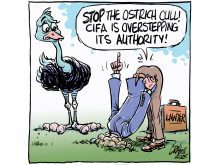IF EVER there was an industry that needed fairness from government to get it out of a tough spot, it’s the elk industry.
Yet elk producers, who have been hard hit in the wake of chronic wasting disease, are not receiving the treatment they deserve.
The Canadian Food Inspection Agency has ordered 8,300 elk and deer to be destroyed on 42 farms. Producers are fighting to receive fair compensation.
The trouble began when CWD was detected in the early 1990s. Affected producers at that time received fair market value to a maximum of $4,000 per animal.
Read Also

Budget seen as fairly solid, but worrying cracks appear
The reaction from the agriculture industry to prime minister Mark Carney’s first budget handed down November 4th has been largely positive.
Exact compensation was determined through negotiations between the CFIA and affected producers.
But producers with CWD-infected herds in the last few years – since the market value for elk has drastically dropped – are seeing much lower compensation levels. Some report receiving $700 per animal.
Producers have been vigilant in complying with CWD testing programs but reduced compensation may cause them to balk at sending animal heads for testing. If the disease is not discovered and producers can hold on until prices recover, they stand a better chance of coming through the crisis.
The CFIA has been working on the problem. It is developing a chart of market values for cervids – elk and deer – that could offer a better compensation guide. The chart would be based on national price averages.
That, combined with receipts from affected producers’ own cervid sales, should provide a more reasonable guide for setting compensation rates.
Affected elk producers cannot afford delays. The system for calculating compensation must be improved soon.
As well, there’s the issue of four elk producers who face severe restrictions on what they can grow – livestock or crops – because their farms are deemed to have had high levels of CWD infestation.
These farms could make ideal research project sites if restocked with a fixed number of animals and rigorously monitored. The projects could test CWD’s persistence in soil, water and other areas of the environment.
All animals could be subject to tests after four years to determine if they have contracted the disease from the environment.
Such a project would offer Canada the chance to contribute to research efforts to unlock the mysteries of CWD and its spread, while also providing assistance to affected producers.
Yet the CFIA has been unable to come up with the necessary funds.
It may not be politically popular for the government to help elk producers. Public sentiment against hunt farms gets in the way, in spite of the fact that most elk are raised for antler velvet.
But now is not the time for political games. It’s the time for fairness in compensation to elk producers.














